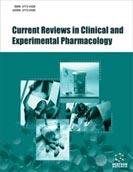Abstract
Background: Signal strength for any drug-event combination can be determined using disproportionality analysis. Vemurafenib is a BRAF inhibitor approved by the US Food and Drug Administration (FDA) in 2011 for the treatment of metastatic melanoma. This study aims to identify the signal strength of Drug Reaction with Eosinophilia and Systemic Symptoms (DRESS) associated with vemurafenib using disproportionality analysis in FDA database of Adverse Event Reporting System (FAERS).
Methods: Data were obtained from the public release of data in FAERS. The case/non-case method was adopted for the analysis of the association between vemurafenib use and DRESS. The data mining algorithm used for the analysis was the Reporting Odds Ratio (ROR) and Proportional Reporting Ratio (PRR). A value of ROR-1.96SE>1, PRR≥2 was considered as positive signal strength.
Results: A total of 7,171 reports for DRESS have been reported in the FDA database. Amongst which, 125 reports were associated with vemurafenib. A cumulative ROR of 17.72 (95% CI 14.83; 21.18) and PRR of 17.46 (95% CI 14.65; 20.81) were observed. Combination treatment of vemurafenib with cobimetinib had a higher number of reports (100) with ROR of 103.42 (84.13- 127.14) and PRR of 94.52 (78.26- 114.15). Four deaths were reported and the non-death serious reports included hospitalization, life-threatening, disability, and other serious events with 61, 11, 2 and 39 reports, respectively.
Conclusion: Positive signal strength was observed for vemurafenib associated DRESS. The signal strength was higher for vemurafenib in combination with cobimetinib than vemurafenib alone. Health care professionals should be cautious about encountering serious adverse events and should report such events to the regulatory authorities.
Keywords: Vemurafenib, DRESS, Disproportionality analysis, FAERS, vemurafenib, lymphadenopathy.
Graphical Abstract
[http://dx.doi.org/10.1517/14740338.2015.1011618] [PMID: 25648338]
[http://dx.doi.org/10.1038/nature00766] [PMID: 12068308]
[http://dx.doi.org/10.1200/JCO.2010.32.4327] [PMID: 21343559]
[http://dx.doi.org/10.1111/j.1365-2133.2003.05584.x] [PMID: 14632808]
[PMID: 30566546]
[http://dx.doi.org/10.1016/j.ejim.2003.09.004] [PMID: 14962704]
[http://dx.doi.org/10.1159/000439272] [PMID: 26418832]
[http://dx.doi.org/10.1001/jamadermatol.2013.5278] [PMID: 23986488]
[http://dx.doi.org/10.1111/jdv.12685] [PMID: 25175726]
[http://dx.doi.org/10.1016/j.jdcr.2017.06.027] [PMID: 29296640]
[http://dx.doi.org/10.1056/NEJMoa1002011] [PMID: 20818844]
[http://dx.doi.org/10.1056/NEJMoa1112302] [PMID: 22356324]
[http://dx.doi.org/10.1016/S1470-2045(14)70012-9] [PMID: 24508103]
[http://dx.doi.org/10.1093/annonc/mdt015] [PMID: 23406731]
[http://dx.doi.org/10.2332/allergolint.55.1] [PMID: 17075280]
[http://dx.doi.org/10.1016/j.jaad.2018.07.029] [PMID: 30081108]
[http://dx.doi.org/10.1016/j.jaad.2014.10.032] [PMID: 25592341]
[http://dx.doi.org/10.1007/s40264-014-0150-2] [PMID: 24643967]
[http://dx.doi.org/10.1016/j.jval.2018.09.2200]
[http://dx.doi.org/10.1007/s40261-017-0503-6] [PMID: 28224371]
[http://dx.doi.org/10.1007/s11096-020-01018-z] [PMID: 32270377]






























